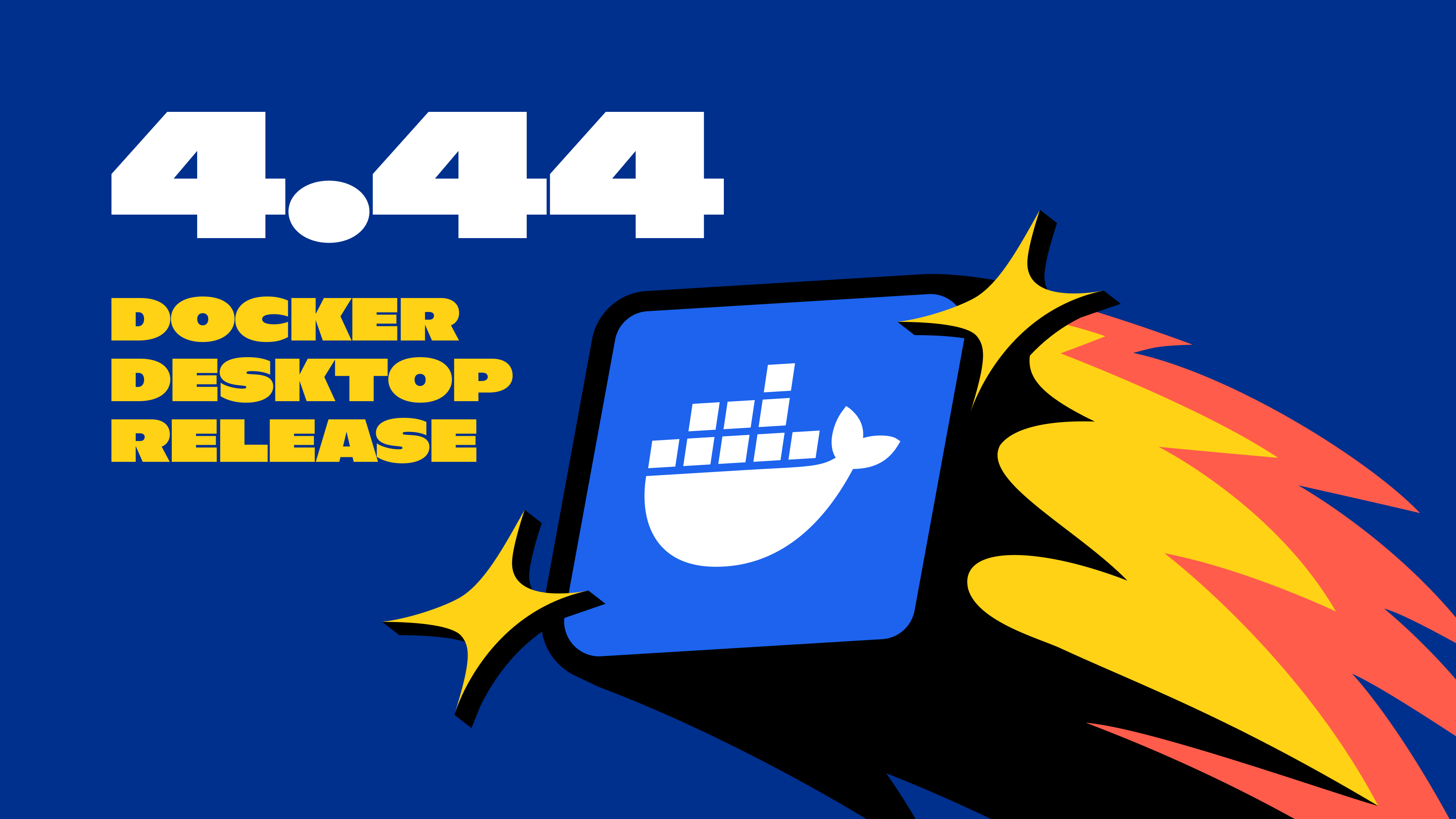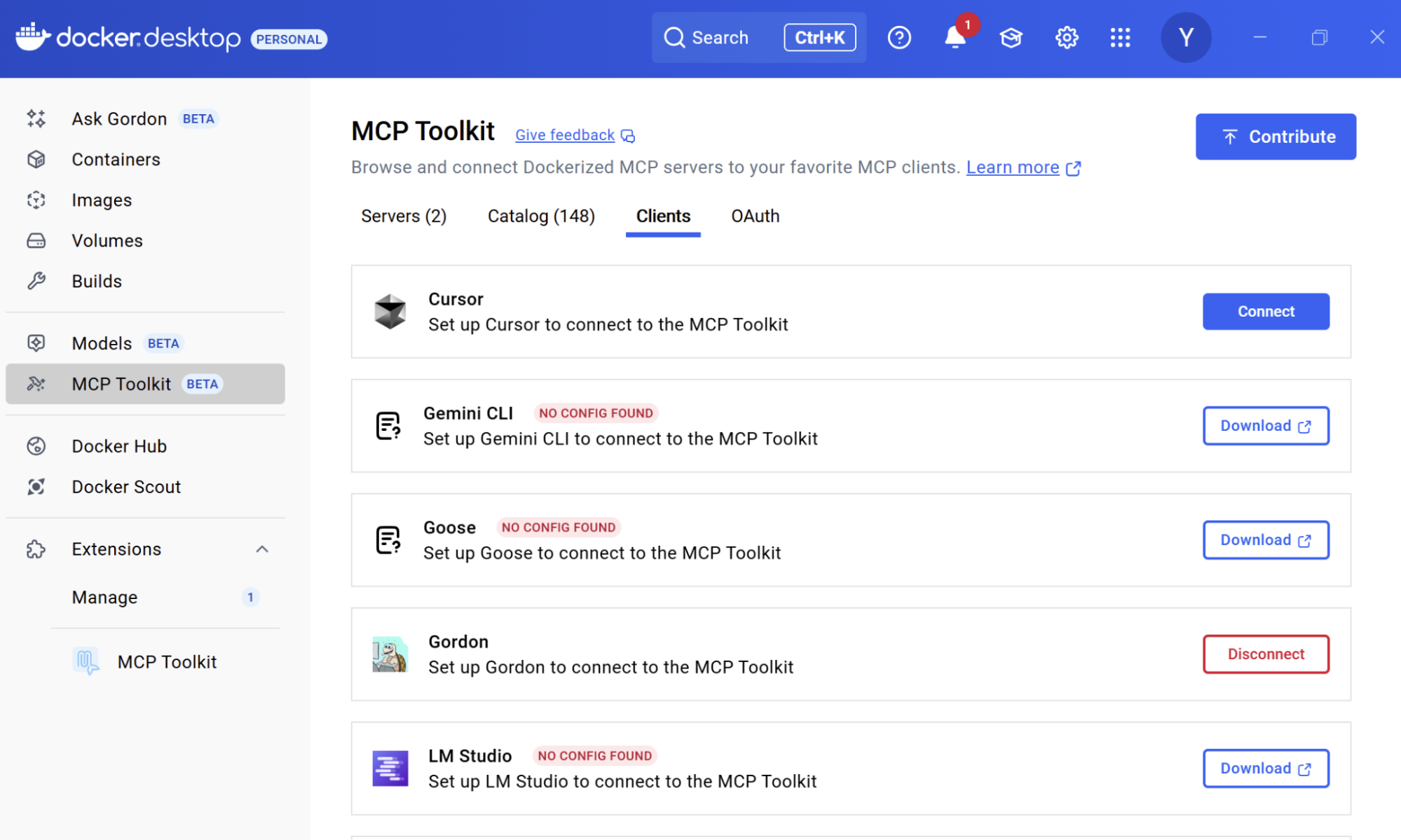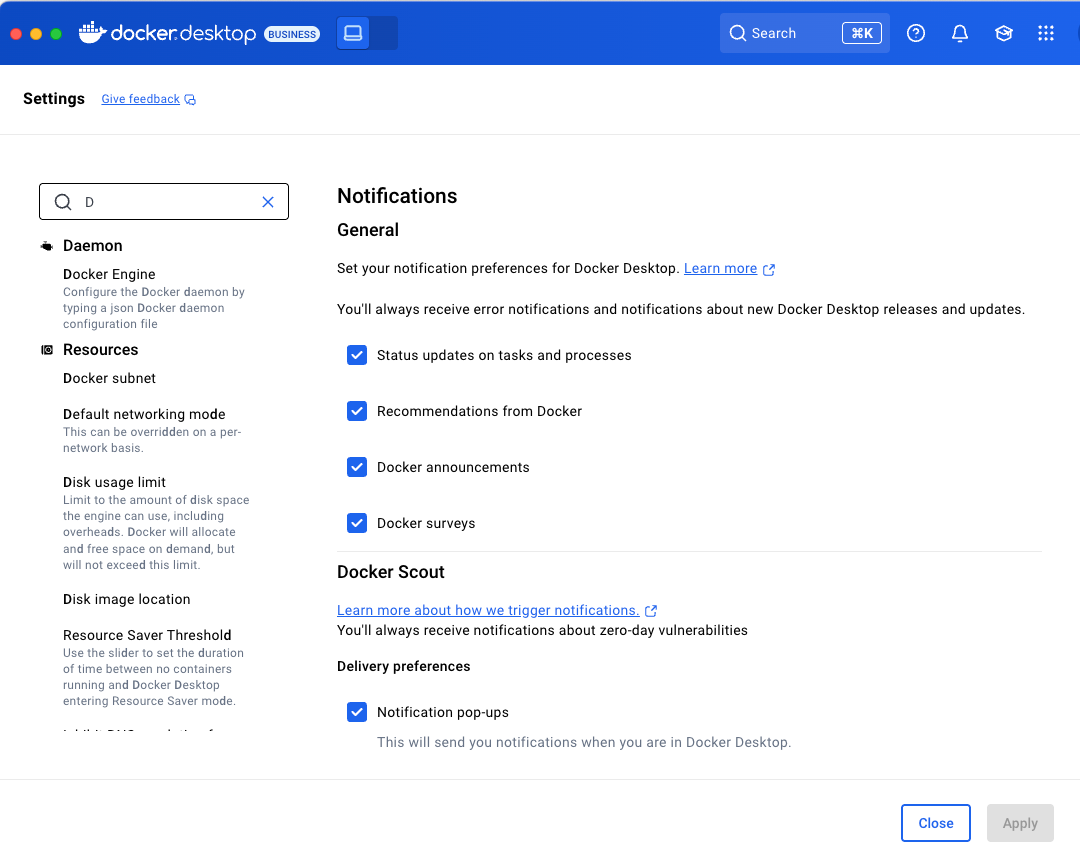In Docker Desktop 4.44, we’ve focused on delivering enhanced reliability, tighter AI modeling controls, and simplified tool integrations so you can build on your terms.

Docker Model Runner Enhancements
Inspectable Model Runner Workflows
Now you can inspect AI inference requests and responses directly from Docker Model Runner (DMR), helping you troubleshoot and debug model behavior quickly. This feature brings transparency and debugging capabilities to AI workflows and provides a major usability upgrade for those users experimenting with AI/LLM-based applications.
Use the new request and response inspector for deeper visibility into your inference request/response cycle. This inspector captures HTTP request and response payloads, allowing you to examine prompt content, headers, and model outputs within the Model Runner runtime. This level of transparency helps you quickly identify malformed inputs,
Real-time Resource Checks
Run multiple models concurrently with real-time resource checks. This enhancement prevents lock-ups and system slowdowns, and more importantly, allows running an embedding model together with an inference model, helping developers feel confident using Docker Desktop for advanced AI use cases.
You’ll see a warning when system constraints may throttle performance, helping you avoid Docker Desktop (and your entire workstation) freezing mid-inference. Docker will detect GPU availability and memory constraints, issue warnings, and allow configuring CORS rules to safeguard the DMR endpoint during local development. These enhancements give developers confidence that even large in-scale model experiments won’t crash their system, ensuring smoother and more predictable local inference workflows.
Goose and Gemini CLI are now supported as MCP clients, with one-click setup via the Docker MCP Toolkit
The Docker MCP Toolkit now includes support for Goose and Gemini CLI as MCP clients, enabling developers to connect seamlessly to over 140 MCP servers available through the Docker MCP Catalog. This expanded client support allows Goose and Gemini users to access containerized MCP servers such as GitHub, Postgres, Neo4j, and many others, all with a single click.
With one-click integration, developers can spend less time configuring infrastructure and more time focusing on building intelligent, goal-driven agents. Docker handles the complexity behind the scenes, so teams can iterate faster and deploy with confidence.

Figure 1: Goose and Gemini CLI now supported as MCP clients for easy one-click setup.
New Kubernetes Command in Docker Desktop CLI
Docker Desktop now includes a new CLI command for managing Kubernetes directly from the Docker Desktop CLI, reducing the need to toggle between tools or UI screens.
docker desktop kubernetes
This new command allows you to enable or disable the Kubernetes cluster included in Docker Desktop, check its status, and view configuration options, all from within the terminal. It integrates tightly with the Docker Desktop CLI, which manages other desktop-specific features like the Model Runner, Dev Environments, and WSL support.
This simplifies workflows because developers often have to move between Docker and Kubernetes environments. By bringing cluster management into the CLI, Docker reduces the cognitive overhead and speeds up workflows, especially for teams prototyping locally before deploying to managed clusters. Whether you’re preparing a microservice for deployment, running integration tests against a local cluster, or just toggling Kubernetes support for a temporary setup, this command helps you stay focused in your terminal and move faster.
Settings Search and Platform Upgrades
Improved search in Settings lets you find configurations faster without digging to locate toggles or preferences.

Figure 2: Improved search settings
Apple Virtualization is now the default virtualization backend
On macOS, Apple Virtualization is now the default virtualization backend, delivering superior performance. QEMU support has been fully removed to streamline startup times and resource usage. With virtualization handled natively via Apple’s hypervisor framework, users benefit from faster cold starts and more efficient memory management for container workloads. These enhancements simplify platform behavior and reduce friction when setting up or troubleshooting environments, saving valuable time during early-stage development.
WSL2: Performance and Stability Enhancements
Under the hood, Docker has been tuned for smoother performance and improved stability, especially in Windows+WSL environments. Expect fewer freezes, faster startups, and more responsive UI behavior even when running heavy workloads.
Updates include:
- Reduced background memory consumption
- Smarter CPU throttling for idle containers
- Tighter integration with WSL for graphics-based workloads
This means you can confidently test graphics-heavy or multi-model pipelines on Windows without sacrificing responsiveness or stability.
Conclusion
With 4.44, Docker Desktop strengthens both the developer experience and system reliability, whether you’re tuning prompts, orchestrating multiple AI models, or shifting into Kubernetes workflows. The goal is fewer surprises, deeper observability, and faster iteration.
But this release is another step in Docker’s journey to becoming your go-to development toolkit and your go-to platform for building secure AI applications. From new MCP integrations to GPU-powered Model Runner experiences, Docker is doubling down on helping developers build, test, and ship the next generation of intelligent software with simplicity, security, and speed.
We’re committed to evolving alongside the AI ecosystem so that Docker not only meets your current needs, but also becomes the platform you trust to take your ideas from prototype to production, faster and more securely than ever before.
Upgrade to the latest Docker Desktop now →
Learn more
- Authenticate and update today to receive your subscription level’s newest Docker Desktop features.
- Subscribe to the Docker Navigator Newsletter.
- Learn about our sign-in enforcement options.
- New to Docker? Create an account.
- Have questions? The Docker community is here to help.




